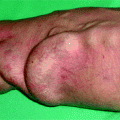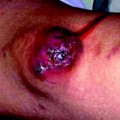Luc Turmel-Rodrigues and Claude J. RenaudDiagnostic and Interventional Radiology of Arteriovenous Accesses for Hemodialysis201310.1007/978-2-8178-0366-1_8© Springer-Verlag France 2013
8. Patient Preparation Prior to Angiography and Endovascular Interventions
(1)
Department of Vascular Radiology, Clinique St-Gatien, 8 place de la cathédrale, 37000 Tours, France
(2)
Department of Vascular Radiology, Clinique Ambroise Paré, 25 boulevard Victor Hugo, 92200 Neuilly-sur-Seine, France
(3)
Department of Medicine, Khoo Teck Puat Hospital, Alexandra Health, 90 Yishun Central, Singapore, 768828, Singapore
Abstract
Fistulography, dilation, and declotting are usually performed under local anesthesia and as same day outpatient procedures. Basic questions that may have safety implications need to be addressed: known allergy to iodinated contrast, hepatitis and retroviral serology status, list of medications the patients are on, comorbidities, and exceptional need for neuroleptanalgesia. “Allergy to iodine” does not exist. A patient who developed a suspected allergic reaction to a certain base agent can be administered another iodinated molecule. Patients taking oral anticoagulants like warfarin and presenting without a same day INR should never have cannulation of the brachial artery but can still undergo angiography or angioplasty by cannulation of the arterialized vein as is the case during any dialysis session. Declotting of thrombosed accesses should be preceded by urgent dialysis by temporary femoral catheter whenever the serum potassium level being exceeds 6 mmol/L.
Stay updated, free articles. Join our Telegram channel

Full access? Get Clinical Tree






